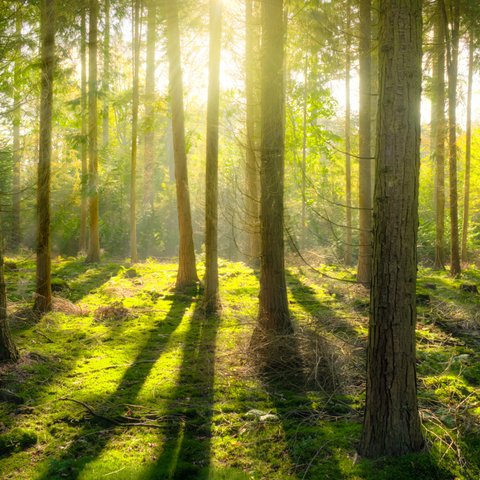Summer has arrived, which also means the return of the sun! We love its warmth and its pretty rays, but it's not always our skin's best friend... We also know that it always gets hotter - due to global warming...!
Therefore, it is equally important to protect ourselves, while ensuring that our sun protection measures do not harm the environment.
THE DANGERS OF THE SUN
The sun emits different types of ultraviolet (UV) rays, including UVA and UVB rays, which can penetrate the skin and cause damage.
Excessive and prolonged exposure to UV rays can lead to sunburn, dehydration, skin pigmentation disorders, premature aging and even skin cancer.
It is therefore essential to take adequate measures to protect yourself.
Sun burn
Too prolonged exposure to the sun without protection can lead to sunburn, characterized by redness, tenderness and skin pain.
Sunburn can increase the risk of skin cancer.
Premature skin aging
UV rays can damage collagen and elastin fibers in the skin, leading to premature aging, wrinkles, age spots, and uneven skin texture.
Skin cancer
Chronic and repeated exposure to UV rays can increase the risk of developing skin cancer, including basal cell carcinoma, squamous cell carcinoma, and malignant melanoma, which is the deadliest type of skin cancer.
Dehydration
Prolonged exposure to the sun can cause excessive sweating, which can lead to dehydration if one does not drink enough fluids to compensate for the water loss.
ENVIRONMENTALLY FRIENDLY ALTERNATIVES
UV clothing
And yes, there are specially designed garments with fabrics that provide built-in sun protection and can be a great alternative to sunscreen.
These garments block UV rays and are environmentally friendly.
Use eco-friendly sunscreen
Choose sunscreens that do not contain chemicals harmful to corals and the aquatic environment, such as oxybenzone and octinoxate.
Favor mineral sunscreens based on zinc oxide or titanium dioxide, which are more environmentally friendly.

natural shelter
Take advantage of the natural shade of the trees to protect you from the sun.
Find shady places such as parks with dense trees to shade you from the sun and reduce your direct exposure.
Use of natural products
If you prefer to use homemade products, you can make your own sunscreen by mixing coconut oil, non-nano zinc oxide and possibly a few drops of carrot essential oil, which has sun protective properties. natural.
Be sure to consult reputable sources and do some testing to ensure the effectiveness of your blend.

Cover up with eco-friendly accessories
Opt for hats made of natural fibers such as hemp, linen or organic cotton.
They provide extra protection while being environmentally friendly.
STEPS TO ADOPT FOR SUN PROTECTION
Avoid peak hour exposure
Limit your time in the sun when UV rays are strongest, usually between 10 a.m. and 4 p.m.
Choose outdoor activities early in the morning or late afternoon.

Wear protective clothing
Opt for lightweight pants or wide-brimmed hats for maximum skin coverage. Choose fabrics with a high ultraviolet protection factor (UPF).
Use sunscreen
Even if you opt for protective clothing and natural shelters, it is essential to apply sunscreen to the exposed parts of your skin. Choose a broad-spectrum sunscreen with an SPF (sun protection factor) of at least 30. Be sure to apply liberally and reapply every two hours, or more frequently if you sweat heavily or swim.
Check the UV Index daily
Before going out, check the UV index for your area. Weather forecasts or mobile apps can provide you with this information. Depending on the UV index, adjust your sun protection measures accordingly.

Use sunglasses and umbrellas
Protect your eyes by wearing sunglasses that block UV rays.
When you're at the beach or in open spaces, use umbrellas to create areas of shade and reduce direct sunlight.
Sources:
https://www.who.int/en/news-room/questions-and-answers/item/sun-protection
https://cancer.ca/en/cancer-information/reduce-your-risk/be-sun-safe/enjoy-the-sun-safely
https://ehp.niehs.nih.gov/


